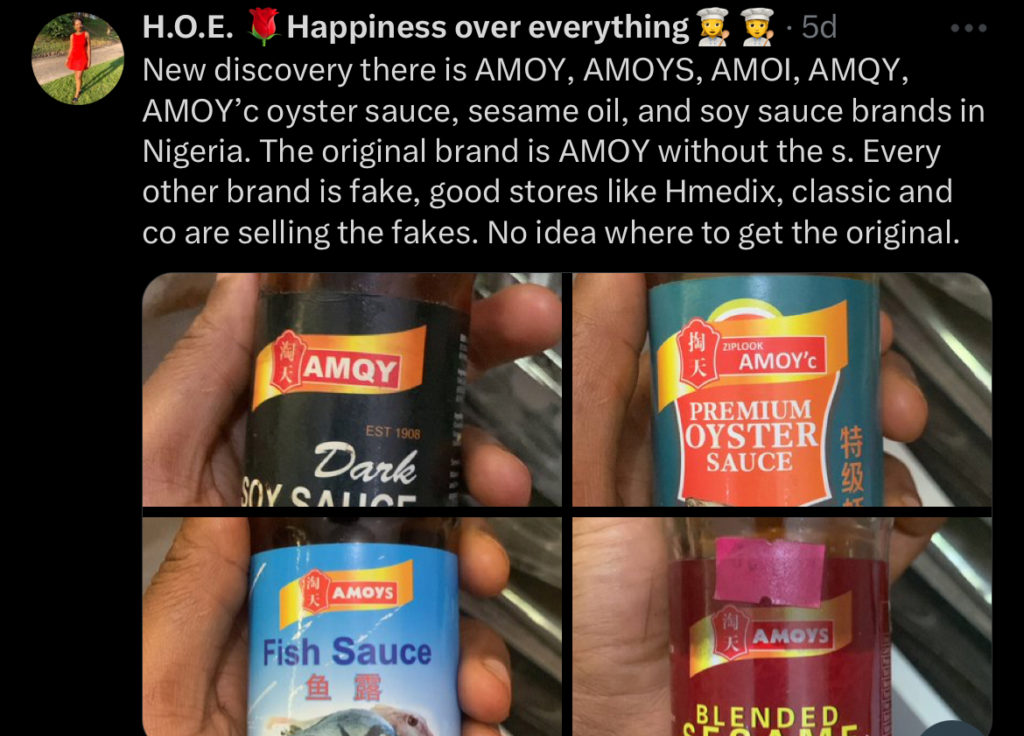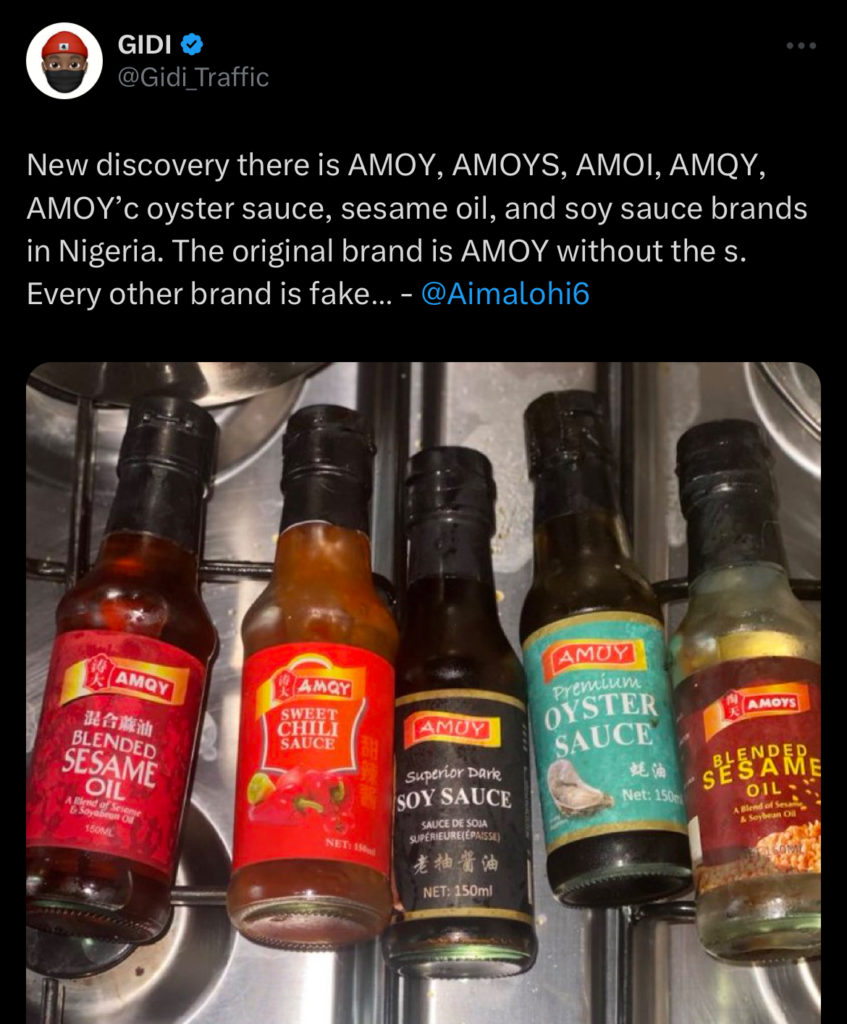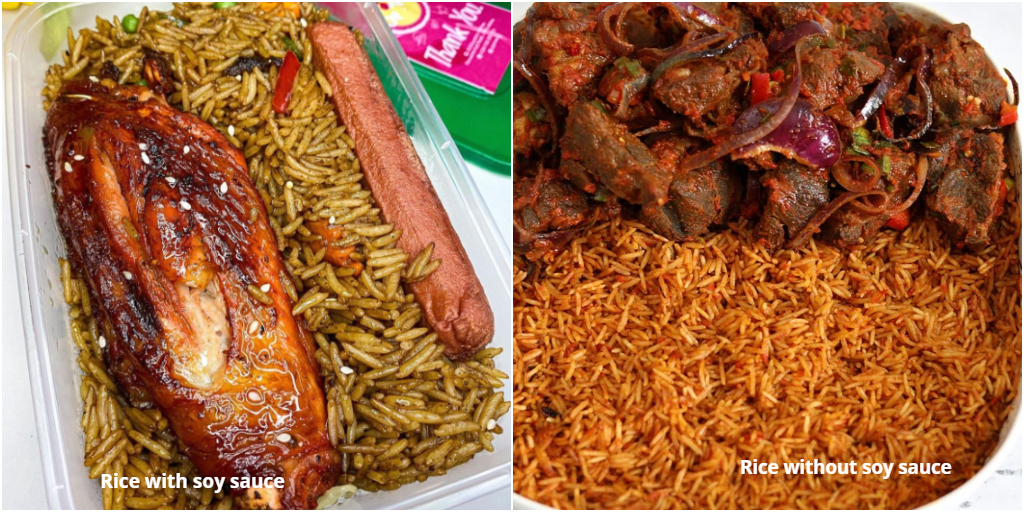As a kid, soy sauce was one of those condiments in my mother’s kitchen that I didn’t quite understand. I don’t think she understood it either. It was just there on the rack, collecting dust and grease. On days when I tried to test my culinary skills, I’d get lucky with curry and thyme, but never with soy sauce. It was too salty, and once, the dark brown colour left my fried egg a complete mess. Like my mum, I abandoned it on the rack, hardly using it even when a recipe called for it.

Nine years later, I crossed paths with soy sauce again while I was at the NYSC orientation camp in Iyana Ipaja. Camp food was unpleasant, and it was hard to tell which Mami Market vendors had the best offering. But one name kept coming up from my roommates: Korede Spaghetti. Everyone swore by how tasty it was until I made a trip to Mami Market to find out for myself.
I’d make about 15 trips to Korede’s stall throughout my stay in camp. There was something different about his stir-fried spaghetti and jollof. The colour was a dark brownish red that leaned towards waakye but just wasn’t as dark. It wasn’t until my final week in camp that I discovered one of his not-so-secret ingredients.
That day, I’d gotten to his stall a little too early and was lucky to watch him season the pasta. As someone who enjoyed cooking, I paid attention to everything that went into his wok, as I had plans to recreate the recipe once I got out of camp. Right there, I watched him pull out a bottle of soy sauce — the same one we’d abandoned in my mother’s kitchen — and sprinkle a generous drizzle on the pasta. I watched the pasta go from bright red to the dark brownish red that had been a mystery all the while.
The next time I was at a supermarket, I picked two bottles of soy sauce off the rack, and from that moment on, there was no going back. But I wasn’t alone in my culinary discovery.
A culinary fraud
On Monday, December 19, Nigerians came across a whistleblower’s tweet raising concerns over the many versions of Amoy, a Japanese brand that had gained dominance in the Nigerian soy sauce market. The X user shared pictures of the product with altered spellings from prominent supermarkets and department stores in Nigeria.

The tweet would serve as a wake-up call to Nigerians who dashed to their kitchens to check their condiment racks. Pictures of soy sauce bottles with AMQY, AMOY’c and AMOYI, soon flooded the internet, with only a few boasting of the original product.



Amid the bigger conversation of the health and safety hazards to buyers of fake food products, other questions loomed: Why are Nigerians invested in soy sauce? What do they cook with it?” I had to find out.

Taiye discovered soy sauce through Nigerian food bloggers on Instagram and YouTube who all seemingly had a craze for stir-fry and gravy recipes.
“Since the food bloggers swore by it, I knew I had to stock up. I love anything stir-fry, so I use it for my stir-fried rice, spaghetti and noodles. It also gives a flavour that’s common to Asian recipes. And since most stir-fry recipes have an Asian origin, it made sense to me to use an ingredient they use to make the meal as authentic to the recipe as possible.”

“I started a stir-fry pasta and jollof rice business four months after NYSC but noticed something was off about the colour of the food I sold. Mine came out like the regular jollof rice and pasta, and I didn’t like it. I checked the pages of food vendors in Lagos who sold the same meals, and noticed the distinct colour of their meals. In their tutorials, they claimed soy sauce was the secret behind the colour, but I wasn’t convinced. Later, I visited a caterer friend in Lagos and saw her using it to cook. I didn’t bother to ask questions, but I returned to Abeokuta with packs of dark soy sauce. I can’t remember if I even got the real deal or one of the counterfeits. But that hack changed the game for my business before I shut it down to relocate,” Damilola, a food vendor said.
One thing is clear, for most Nigerians, soy sauce is first considered for the aesthetics it brings to meals above everything else.

“I knew it as an ingredient for seasoning, but I just never knew how to use it. It’s salty and doesn’t give the savoury sweetness you’d get from seasoning cubes,” Kehinde, a soy-sauce consumer, shared. “One day, I was going through my WhatsApp status and one of my male friends who loved cooking shared a picture of this wicked-looking stir-fry rice. I’d made stir-fry in the past, but it never had the colour I saw in my friend’s photo. I stormed his DM with a simple comment: “How did you get it to look this way?” His response? Soy sauce. And that was how I returned to this ingredient I once disregarded.”
Fake or original, is soy sauce safe?

Some Nigerians, who aren’t fans of soy sauce have questions about the risk factors of a condiment that’s seemingly high in sodium.
Here’s a breakdown of one tablespoon of soy sauce according to experts:
Calories: 8
Carbohydrates: 1 gram
Fat: 0 grams
Protein: 1 gram
Sodium: 902 mg
Just one tablespoon provides 38% of the Recommended Daily Intake (RDI) of sodium. Moderation is key and it is advisable to not pair the sauce with processed food. In Nigeria, where soy sauce is mostly combined with processed chicken franks and sausages, the health concerns raised are valid.
Since I rediscovered soy sauce during NYSC in 2018, my relationship with the condiment has been at a safe arm’s length. I’ve always known there was something much too salty about that sauce. It only makes a grand appearance in my kitchen the few times I’m in the mood for stir-fry pasta or rice. And with the current conversation surrounding fake products everywhere, I’m caught in a web of confusion. Do I check that I have the correct brand of Amoy in my cabinet or postpone till my next stir-fry craving jumps out sometime in 2024?




